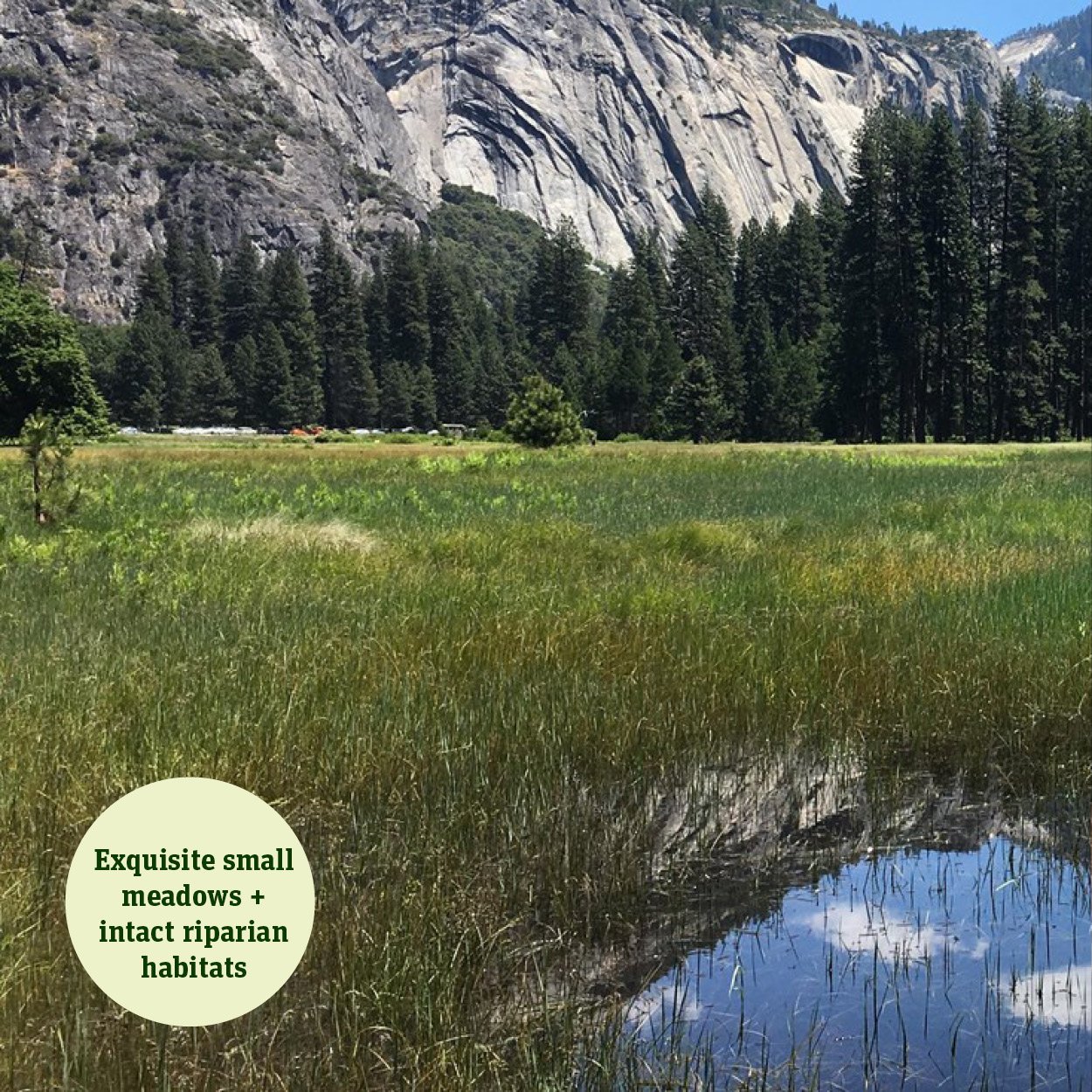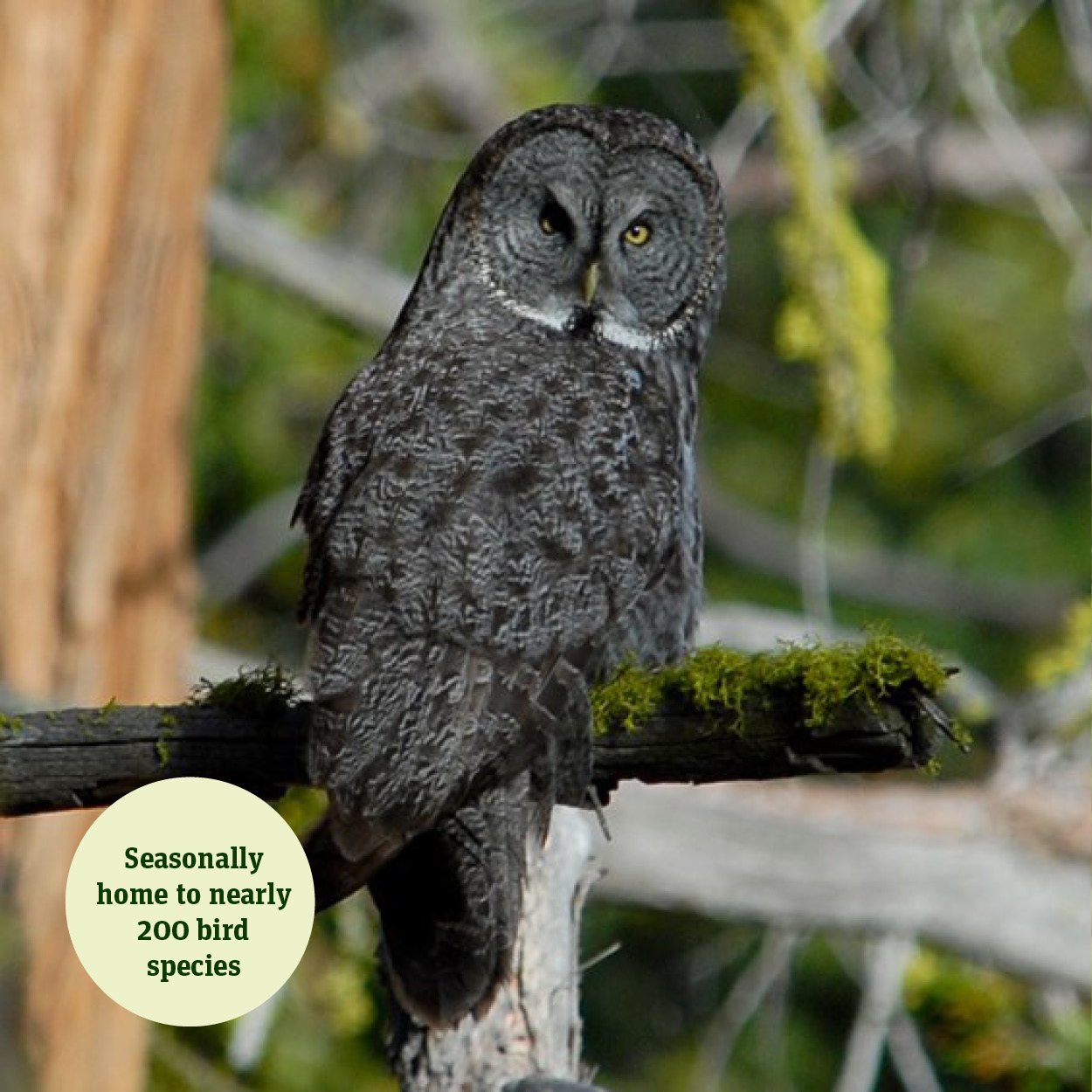Biological Values

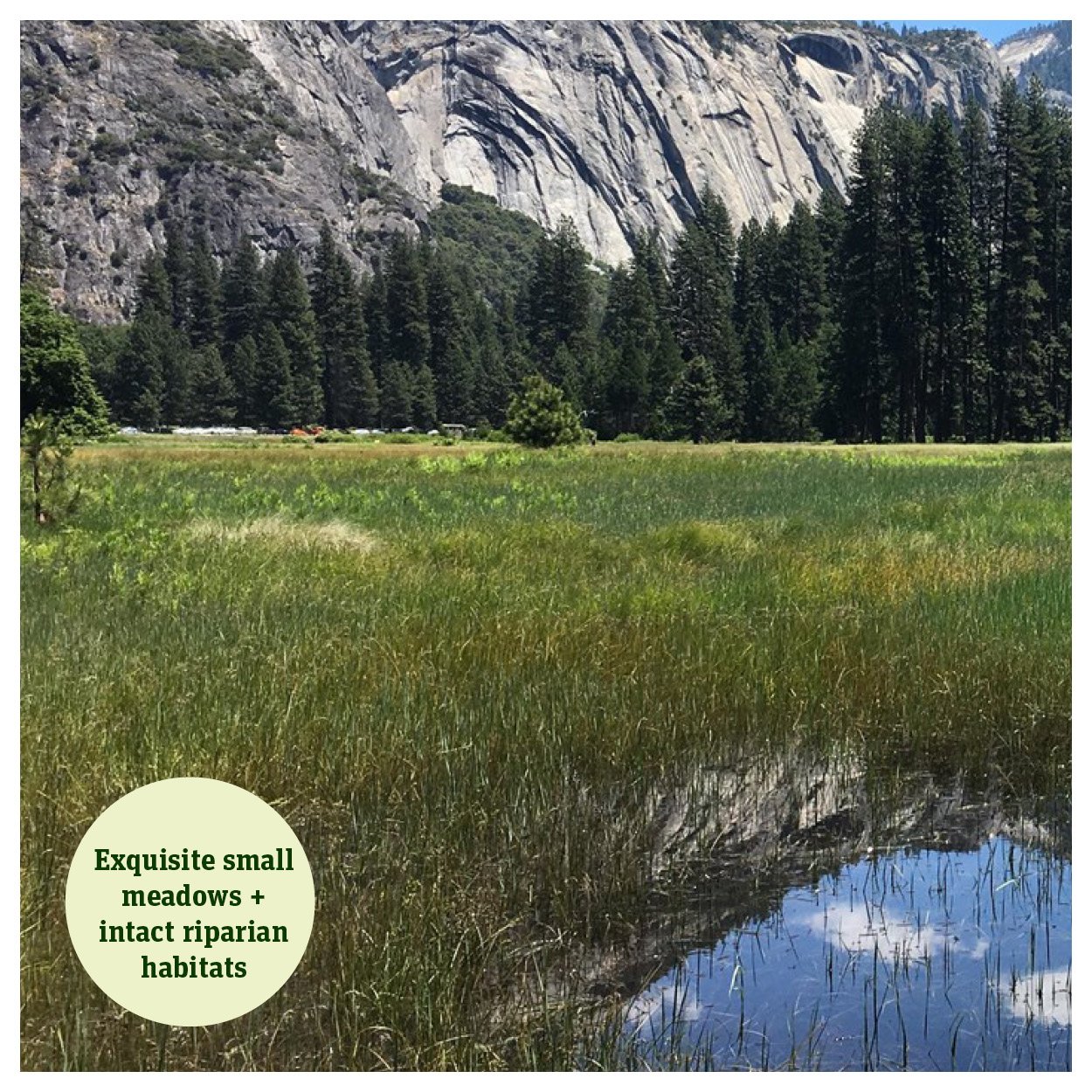
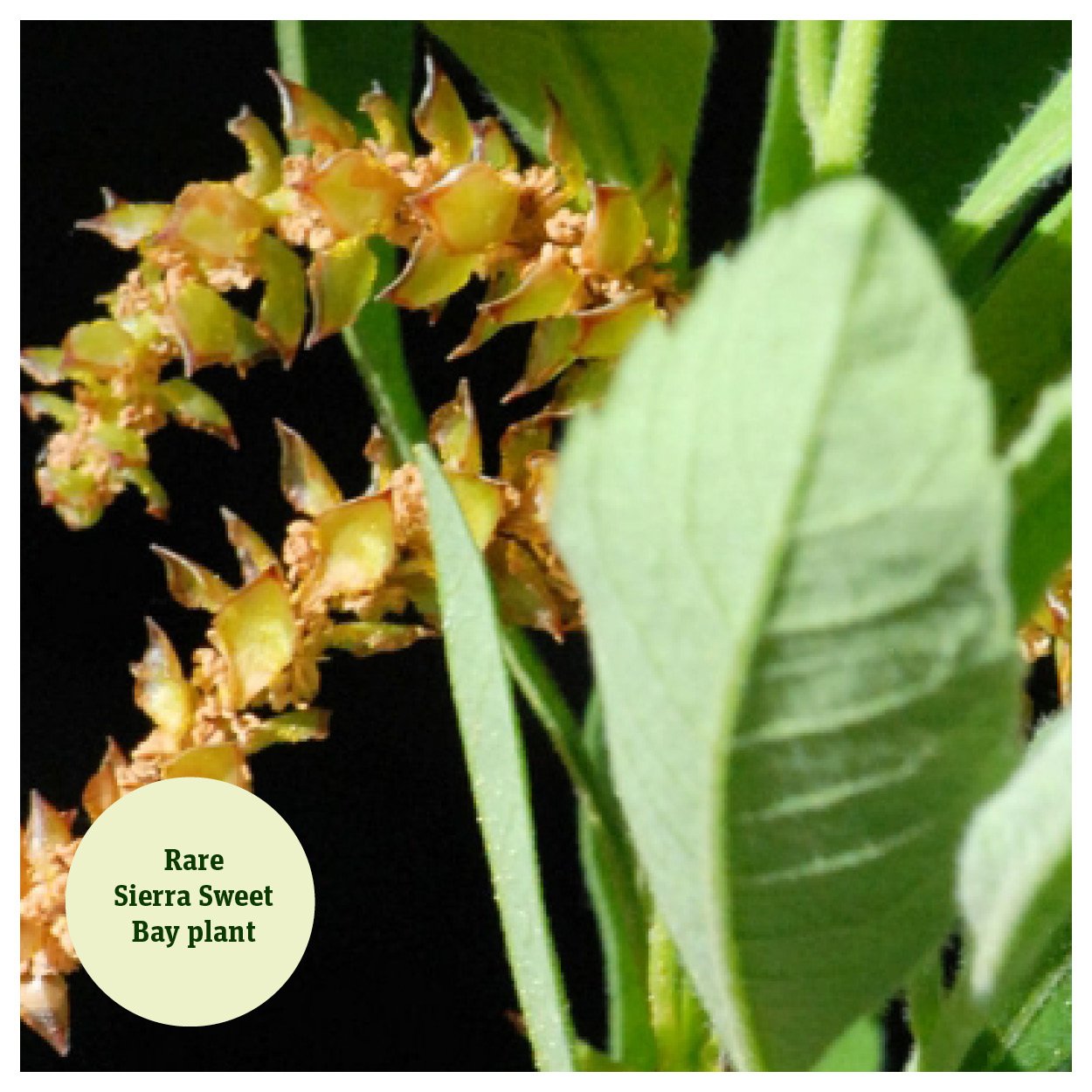
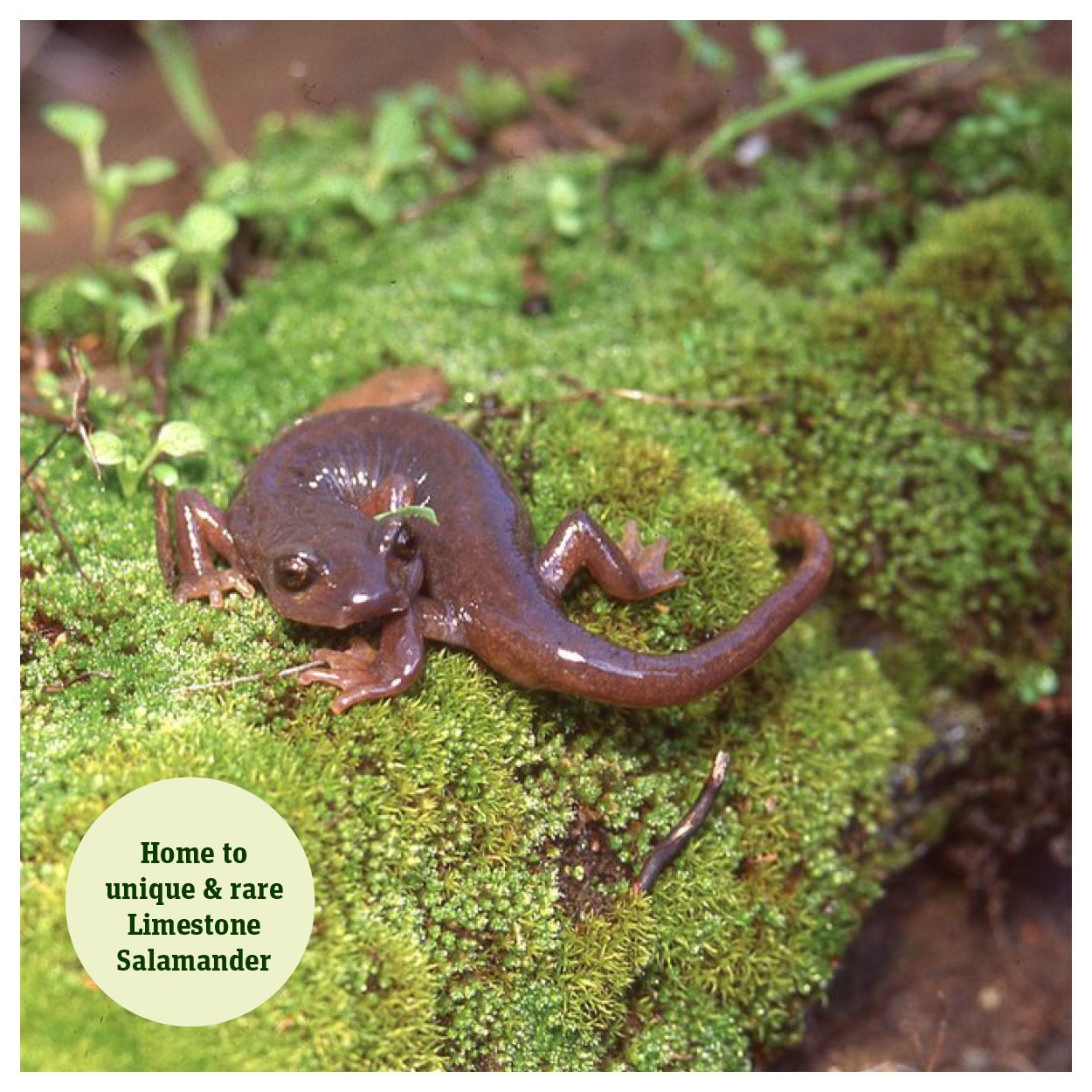
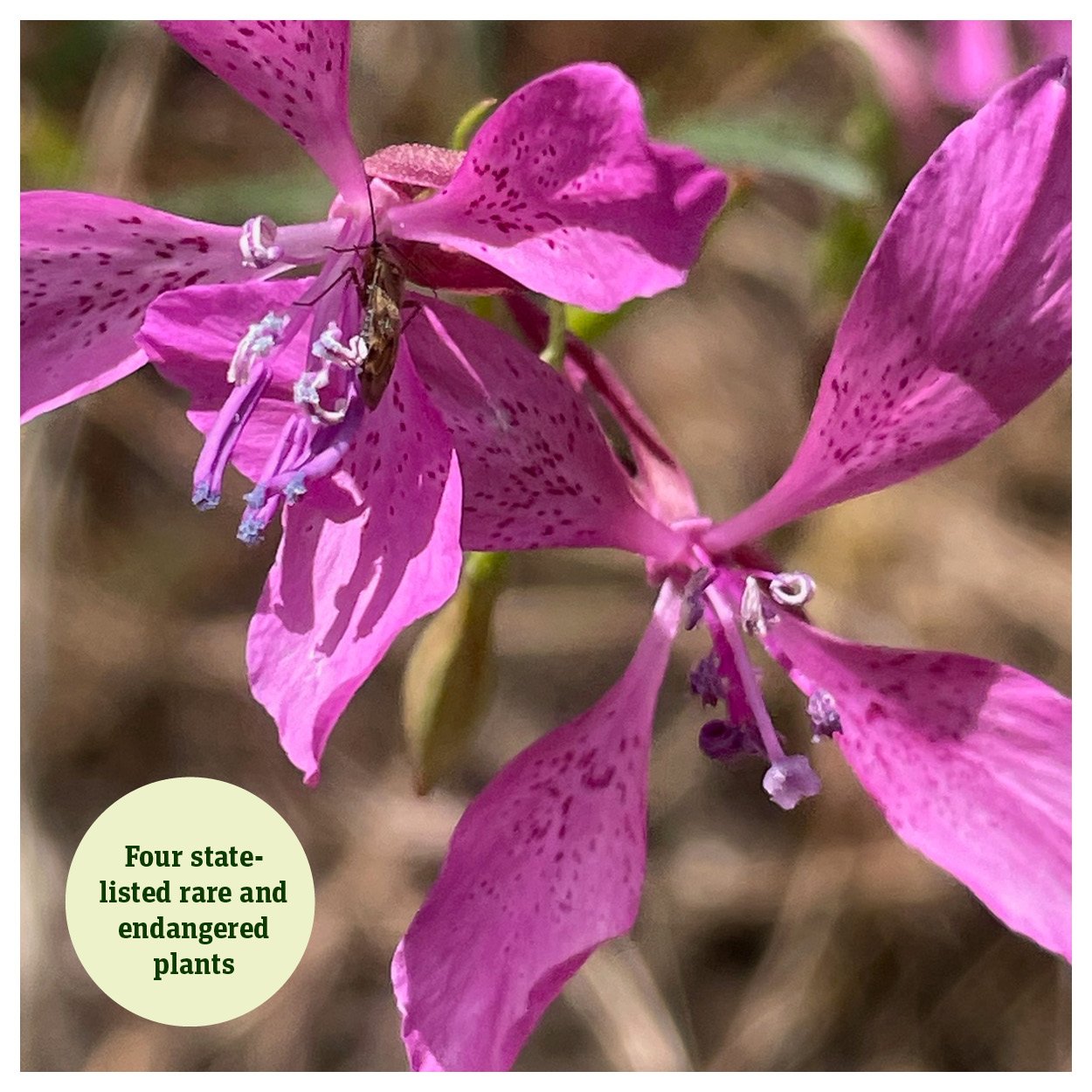
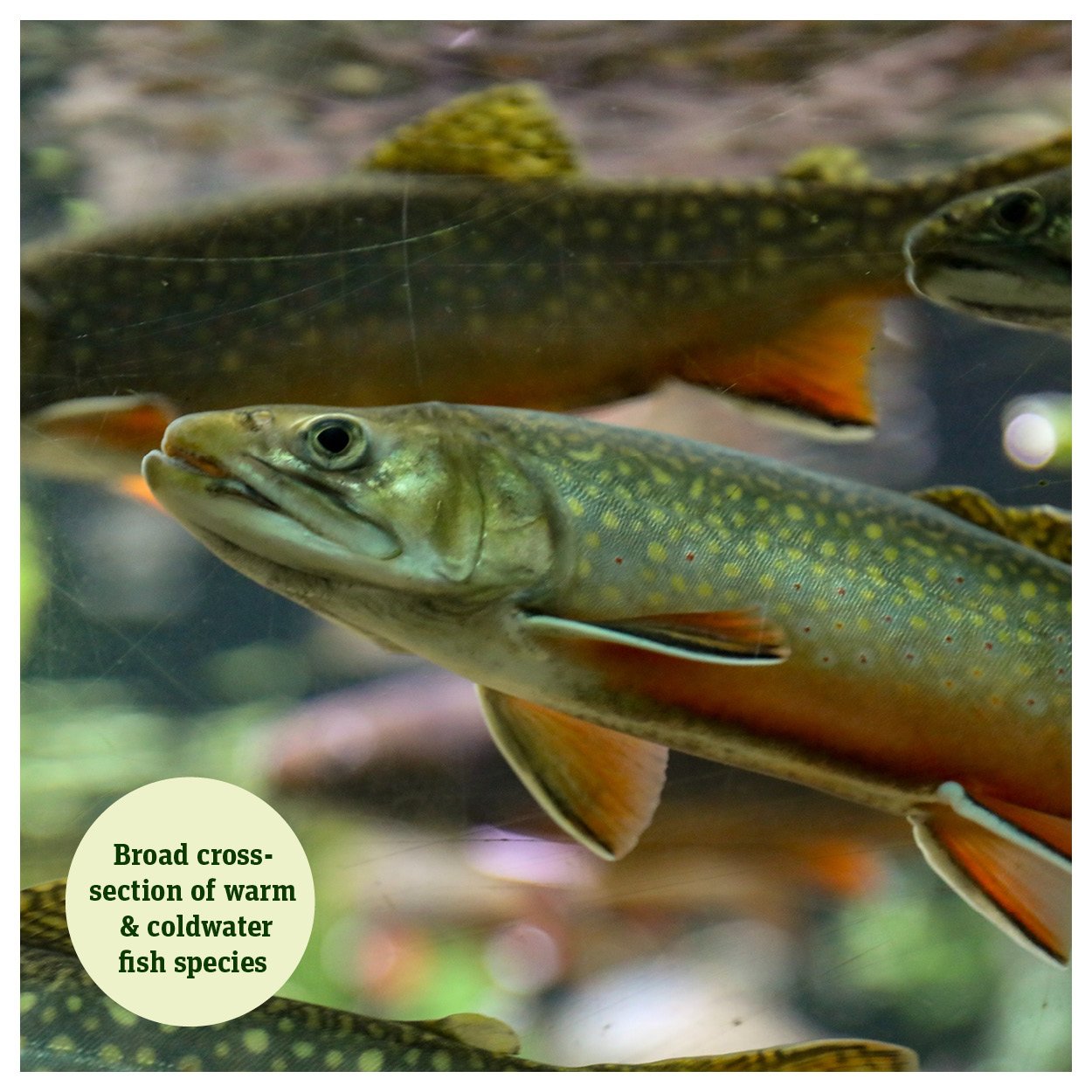

The Merced Wild and Scenic River and its South Fork support a suite of riparian and meadow ecosystems. Within the river corridor, these outstandingly remarkable values include alpine and subalpine meadows along the river stretches above Yosemite Valley and Wawona, as well as the meadow and riparian complex within Yosemite Valley. Downstream are vital foothill elevation ecological communities teeming with life. Dependent on these habitats are a variety of native, endemic, and/or rare plant and animal species. Sustained by periodic flooding and/or high water tables, and also influenced by periodic burning by American Indians, these habitats are river-related crossroads of life in a landscape vibrant with productive habitats.
The Merced River creates numerous, exquisite small meadows and relatively intact adjacent riparian habitats.
Numerous small meadows and adjacent riparian habitats occur on these stretches of river. The meadows and rich riparian habitat within this intact riverine system support a great diversity of plant and animal species, owing their existence to the river and its annual flooding. These range from common species like mule deer (Odocoileus hemionus) to rare species such as the spotted bat (Euderma maculatum).
Photo: Meadow in Little Yosemite Valley, Robb Keele - Getgo Outdoors
The meadows and riparian communities of Yosemite Valley comprise one of the largest mid- elevation meadow complexes in the Sierra Nevada.
The large, moist, mid-elevation meadows and the riparian vegetation communities of Yosemite Valley owe their existence to river processes sustained by the high water table of the river and its annual flooding, as well as periodic burning by American Indians (Anderson et al., 1991) . These mid-elevation meadows (most greater than 30 acres in size), the riparian zone, and wildlife species associated with these habitats are rare and unusual at a regional and national scale.4 Yosemite Valley meadows and riparian habitats support rare and endemic plant and wildlife species, including an exceptional diversity of both bat and sedge species. This biological diversity is a function of the variety of niches made possible by the meadows and presence of year-round water.
The Sierra sweet bay (Myrica hartwegii) is a rare plant found along the South Fork Merced River.
In Wawona and downstream, the South Fork Merced River provides habitat for a rare plant, the Sierra sweet bay (M. hartwegii). This special-status shrub is found in only five Sierra Nevada counties. In Yosemite, it occurs exclusively on sand bars and riverbanks downstream from Wawona and on Big Creek, although only a portion of the Big Creek population is found within the Wild and Scenic River corridor.
Photo: Sierra sweet bay, Barry Breckling - CalPhotos
Endemic only to the Merced River canyon, the Limestone Salamander is perhaps the rarest and most unique species along the watershed.
There are only to 15 known population sites of the limestone salamander (hydromantes brunus) between the mouth of Sweetwater Creek near Briceburg, and the headwaters of Lake McClure; 8 sites are protected under the Wild and Scenic Rivers Act. Limestone Salamanders depend on moist conditions and good cover; they are vulnerable to surface disturbances and drought conditions.
Photo: Limestone Salamander, KKH19 - iNaturalist
Though not called out as an Outstandingly Remarkable Value, the abundance of bird species throughout the watershed contribute to the Merced River’s rich biology.
Out of 200 species of birds that occur seasonally or as a resident in the Sierra Nevada, nearly all can be found on the Merced River at different seasons. Species include important game fowl like California Quail, interesting non-game fowl like the roadrunner, waterfowl like mallards, wood ducks, buffleheads, and herons, as well as Federal and State-listed raptor species like the bald eagle, great grey and spotted owls, and peregrine falcons. (U.S. Forest Service)
Photo: Great Grey Owl, Joe Medley - U.S. Forest Service
Though not a specific value, rare plants like the following four contribute to the unique biology status within the Merced River from El Portal and Briceburg.
Merced Clarkia (Clarkia Lingulata) State-Listed endangered Species, Federal Candidate 1 species
Yosemite Onion (Allium Yosemitense) State-Listed Rare Species
Congdon’s wooly sunflower (Eriophyllum Congdonii), State-Listed Rare Species
Congdon’s lewisia (Lewisa Congdonii) State-Listed Rare Species
More common rare plant, the Shaggyhair Lupine (Lupinus Spectabilis) western portions of the Wild and Scenic river corridor, near Lake McClure. Federal Candidate 2 species.
Photo: Merced Clarkia, Oscar MV - iNaturalist
Fisheries contribute to the wildlife values of the Merced River at lower elevations (including Bureau of Land Management) sections and through its South Fork.
The Merced River occupies a transitional zone between the cold waters of the upper reaches of the watershed and the warm waters of Lake McClure. Fisheries are broad cross-sections of native and introduced coldwater and warmwater fish species occur. Native species like California roach, Sacramento pikeminnow, hardhead (a California Species of Concern) and riffle sculpin depend on the health of the river habitat. Common non-native species include bluegill, smallmouth bass, rainbow and brook trout, or more. (Bureau of Land Management).
Photo: Brook Trout, Rigal AZ - Unsplash
The Merced River is home to many.
Get to know more watershed biology and how you can help it thrive.



